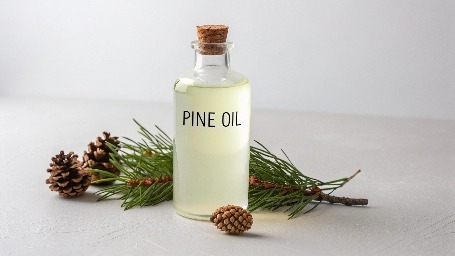Pine oil is a versatile essential oil widely used in cleaning products due to its natural antiseptic properties and refreshing piney odor. From household cleaners to industrial cleaning solutions, pine oil remains a key ingredient in formulations aimed at delivering effective cleaning capabilities. However, the pine oil price fluctuates based on various factors such as concentration levels (e.g., Pine Oil 65%, Pine Oil 70%, Pine Oil 85%, Pine Oil 95%), raw material costs, and market trends. In this blog, we dive deep into the pricing dynamics of pine oil, its derivatives like Dipentene Oil, Delta-3-Carene, and Terpinolene Oil, and how these affect the cleaning product industry.
Understanding Pine Oil and Its Variants
Pine oil, derived from pine trees—often from chir pine forests or pine needles—is a natural product celebrated for its aromatic oils and cleaning potential. Available in multiple grades such as Pine Oil 65%, 70%, 85%, and 95% (India), its pricing varies depending on purity, production costs, and demand in the pine oil market. Alongside pine oil, related compounds like DDTO oil and terpene-based pine oil play a role in industrial cleaners and eco-friendly cleaning products.
Understanding Pine Oil and Its Types
Key Variants of Pine Oil
- Pine Oil 65%: A cost-effective option for bulk pine oil used in household cleaning products.
- Pine Oil 70%: Slightly higher purity, balancing price and performance in cleaning agents.
- Pine Oil 85%: Preferred for premium eco-friendly products with a stronger pine scent.
- Pine Oil 95% India: High-purity distilled pine oil, often used in industrial pine oil applications and personal care products.

Factors Influencing Pine Oil Price
The pine oil price is shaped by several market forces, raw material availability, and production processes. Below, we explore these factors in detail:
Supply and Demand Dynamics
- Pine Oil Demand: Rising interest in sustainable products and natural ingredients has increased demand for pure pine oil.
- Raw Material Costs: Harvesting pine needles from pine forests and processing them into oil impacts pricing strategies.
- Market Trends: The shift toward eco-friendly cleaning products has boosted the pine oil market, particularly for high-grade variants like Pine Oil 95%.
Production and Processing Costs
- Distillation: Producing distilled pine oil (e.g., Pine Oil 85% or 95%) requires advanced techniques, raising costs.
- Synthetic vs. Natural: Synthetic pine oil tends to be cheaper but lacks the appeal of natural oils for green pine industries.
- Terpene-Based Pine Oil: Derivatives like Delta-3-Carene and Terpinolene Oil add value but increase production costs.
Pricing Chart
| Variant | Price Range (USD/Liter) | Common Use Case |
|---|---|---|
| Pine Oil 65% | 1-3 | Household cleaners |
| Pine Oil 70% | 3-5 | Cleaning solutions |
| Pine Oil 85% | 5-8 | Industrial cleaning products |
| Pine Oil 95% (India) | 8-12 | Premium natural products |
| Dipentene Oil | 4-6 | Alternative cleaning agents |
Pine Oil Pricing in the Cleaning Industry
Comparative Analysis: Pine Oil vs. Alternatives
Pine oil competes with other essential oils like eucalyptus oil and bergamot oil in the cleaning and personal care products space. However, its pricing trends remain competitive:
- Eucalyptus Oil: $6-10 per liter, less pine-specific scent.
- Dipentene Oil: $4-6 per liter, a cost-effective alternative with similar cleaning agents.
- Synthetic Oils: $1-3 per liter, cheaper but less appealing to eco-conscious buyers.
The pine oil price reflects a balance between quality, purity, and market demand. Whether you’re a pine oil manufacturer, supplier, or consumer, understanding these pricing dynamics is key to making informed decisions. From Pine Oil 65% for budget cleaners to Pine Oil 95% (India) for top-tier natural products, the versatility of pine oil ensures its place in the oil market. As demand for cleaning solutions and sustainable products grows, keeping an eye on pricing strategies and raw material prices will be crucial for stakeholders in this industry.